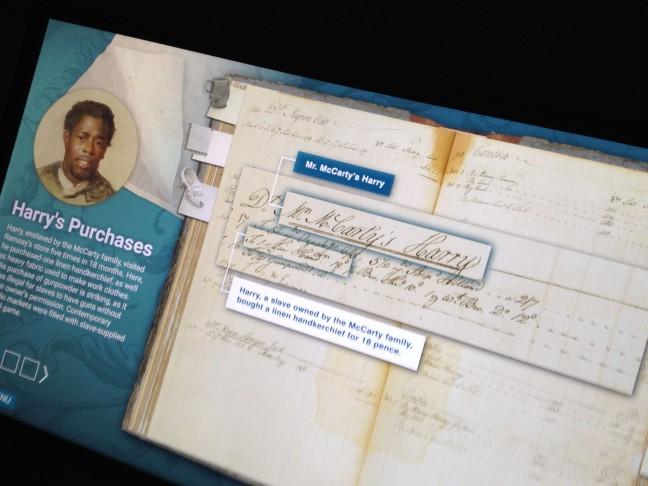What started as an art history class project ended up in Smithsonian Museum’s permanent collection, when University of Wisconsin professor Ann Smart Martin led a group of students to decode an ancient ledger from the 1750s.
UW’s research for the exhibit began when Martin ran into Nancy Davis, curator of the American Enterprise exhibit at the Smithsonian, Martin said. Davis had previously read Martin’s book and became interested.
“In some ways these things are kind of serendipity,” Martin said.
Gene Phillips, UW art history department chair, said Martin has many connections in American studies and American material culture world, which led to this opportunity. He said she was very excited to make this an opportunity for art history students.
From 1753 to 1756, William Ramsey, a prominent tobacco merchant of the time, kept a ledger to record customers’ purchases in a store he owned. Ramsey offered credit to customers he trusted, so they could pay when they had the money or a cash crop was harvested. This was an early example of consumer behavior, Martin said.
Martin proposed a semester-long class in which students had to decode the contents of the 900-page ledger, including what people bought, how much they paid for it and the means by which they paid. She said many names of objects have changed over time, and many objects were imported from other countries, so it was difficult identifying what objects the ledger described.
“It was really not an easy class,” Martin said.” The project kept changing and the information in the document changed. It was working on a project in the real world, but by the end of the day we had accomplished what we set out to do.”
Martin said the class allowed students to work on a project the way they will have to in the professional world, incorporating both team and group research efforts.
The class began their process, Martin said, with only the ledger itself and microfilm, and created a database to enter customer information and purchase details. Each student then individually chose an object to identify.
The students’ work featured in the Smithsonian is part of a larger exhibit called “American Enterprise.” This particular part of the exhibit includes a digitized, interactive version of the ledger that gives information about each customer and object in the document, Martin said.
“One thing we did that has never really been done before is the interactive version of the ledger,” Martin said. “People can really interact with the past rather than a dry, dusty collection of numbers.”
Martin stressed the concept of seeing colonial consumerism in a brand new way.
Martin said she and her students tried to apply modern ideas to the information they decoded. She said though the 17th century is not like today in many ways, decoding records like this can help historians understand the beginning of consumerism and how people became motivated to desire material objects.
“It’s really a consumer snapshot in a whole different way,” Martin said. “Some of this information opens the door to a multitude of questions.”
One example Martin used was the number of enslaved people who shopped at the store where the ledger was used to keep track of data. She said one bought gunpowder and shot despite laws against slaves owning guns, raising questions about how the person was able to make this purchase and how he or she might have paid for it.
Phillips said the art history department tries to offer internships and special experiences like this to allow students to get their feet wet.
“I think anytime students in humanities can see some real world applications of work in those fields it is really a big help,” Phillips said. “People have a really bad misconception of the humanities as an impractical field when really there are lots of practical applications.”
The exhibit in the Smithsonian is permanent, Martin said, and the names of the 16 students in the course as well as Martin’s are featured.
“A lot of people ask, ‘What can you do with a humanities major?’” Martin said. “This is what you can do with a humanities major.”



















